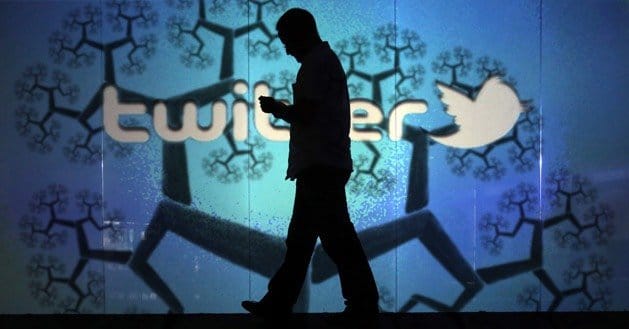 Written by ContentPowered.com
Written by ContentPowered.com
Twitter is a microblogging service that has become the official watercooler of culture in just seven years. Although the main goal of Twitter is sharing, many people want to accumulate as many followers as possible in order to appear popular or influential. Best practice for building a following is doing it organically by presenting fresh, interesting content, with a good voice. The more impatient types will resort to “buying” an audience, with $99 for 10,000 followers being one example.
Number Boosting
While it is not against the rules to purchase followers, it is looked down upon by other Twitter users and considered a form of vanity. Legitimate marketers do not like the practice because it gives the false impression that someone has more clout than they actually do and creates an uneven playing field. Other users see buying followers as desperation and extreme laziness and will not take the person seriously. Most of all, it is obvious when someone has bought followers because most of them are fake. They have nearly identical bios, and some of them may even be using the same photo as an avatar.
How It Works
Now, note that this doesn’t pertain to all service (like ours, for example), but for the most part this is an accurate description of how most Twitter follower boosting services work.
In parts of the world where there is poverty and lack of opportunity, people will work as “drones” for services that deliver Twitter followers. They go online, sign up on Twitter, then proceed to create many profiles, often using the photos of attractive women and clever bios spun by generators. They will then begin tweeting, making random observations and posting inspirational quotes. Another tactic is placing a trending hashtag into an unrelated tweet to draw attention to the account.
When one account is going well, another similar account will be created and will follow the first one. This continues until a small network is created, and all of the fake accounts appear to be real. The accounts are then used to follow people for money. This can also be accomplished through the use of bots.
How to Spot Fake Followers
Anyone who is watching a particular account will notice a sudden uptick of followers, especially if most of the bios and photos appear to be similar. While most users will not come out and accuse someone of buying followers, they will not follow an account that engages in this practice. They will also tell their friends, who will tell their friends and so on. Other methods of detecting fake followers include using online tools such as Twitter Counter and Status People. Twitter Counter charts growth and decline and will show patterns that are not natural. Status People scans an account and shows the percentage of followers who are fake.
Growth Patterns
When a Twitter user has purchased followers, the account will grow by the same number each day, usually by 10 to 20 followers. This keeps the “follower churn” in check and will not trigger alarms on Twitter’s end, which may result in a suspension. An account that is experiencing organic growth will not show a steady pattern of gaining the same number of followers every 24 hours, so this alone is a dead giveaway that someone has bought followers.
Percentages
Using the Status People tool offers revealing information as well. While Twitter counter reveals unnatural growth patterns, this handy tool scans the follower list and weeds out the percentage of those accounts that appear to be fake. While most accounts generally have a small percentage of fake followers, this number should not be higher than five percent. Any result in double digits is a sign that the account holder has probably purchased followers. This is quite negative in terms of credibility, especially if the user is trying to build a reputation as either a marketer or a public figure, such a sports star or an actor.
Lack of Engagement
The foundation of the Twitter service is engagement. This can mean sharing daily life and observations, posting links and photos or retweeting the content of others. What it always comes down to is conversation. If a user is not engaging in conversation with followers, it comes across as elitist at the very least, and using fake followers at the very worst. It is not possible to have meaningful interactions with accounts that are not real. This is a clear sign the user is all about the numbers and is not interested in building any social media relationships. Accounts such as this are avoided by legitimate users, which may drive the account holder to buy even more followers, perpetuating the cycle.
Being Inauthentic
One of the worst sins a person can commit on social media is being inauthentic. It is very easy to be whoever you want on the Internet and in some cases, this is not an issue. When building a carefully crafted web presence, it is crucial to always be a real person who engages with other real people. It can be quite an ego stroke to start out on Twitter and gain an easy 10,000 followers right away, but numbers are not relationships. Building real relationships is what brings in new business, drives people to share and will elevate an account to a popular and respected status. Being authentic is hard work, and those who are not willing to put in the time to build an organic following are missing the point of social media.
Doing Twitter Right
Joining Twitter can be intimidating. There are millions of users on the service, and many of them have been tweeting for a number of years and have a preferred circle of followers with whom to engage. The best way to start is by uploading a real photo, which will make users feel they are dealing with a genuine person. The next step is to write an honest bio that gives an idea of the purpose and goals of the account. Using a relevant hashtag can draw interest, but using too many can look desperate. A website link should be included on the account, as this lends legitimacy. Following a few accounts of similar users can start the engagement process, as can retweeting or favoriting content. Even if the account is for business, the user should not be afraid to occasionally make personal tweets. This adds a human factor that is very appealing to those reading the timeline. Over time, people will follow and more interest will be generated. This is how a Twitter account is built.
In Conclusion
While the temptation to rush in and buy Twitter followers to kickstart an account is tempting, it should be resisted for all the above reasons. It is the wrong way to go about building a reputation on social media. People do not get far in life without genuine, supportive relationships, and it is no different in business or on the Internet. When a user buys followers, people will know and will call that person out on it. It makes the user look fake, inauthentic and untrustworthy. As in life, a tarnished reputation is very difficult, if not impossible, to erase. It is best to start right, stay right and keep things honest.


thanx for the thorough article